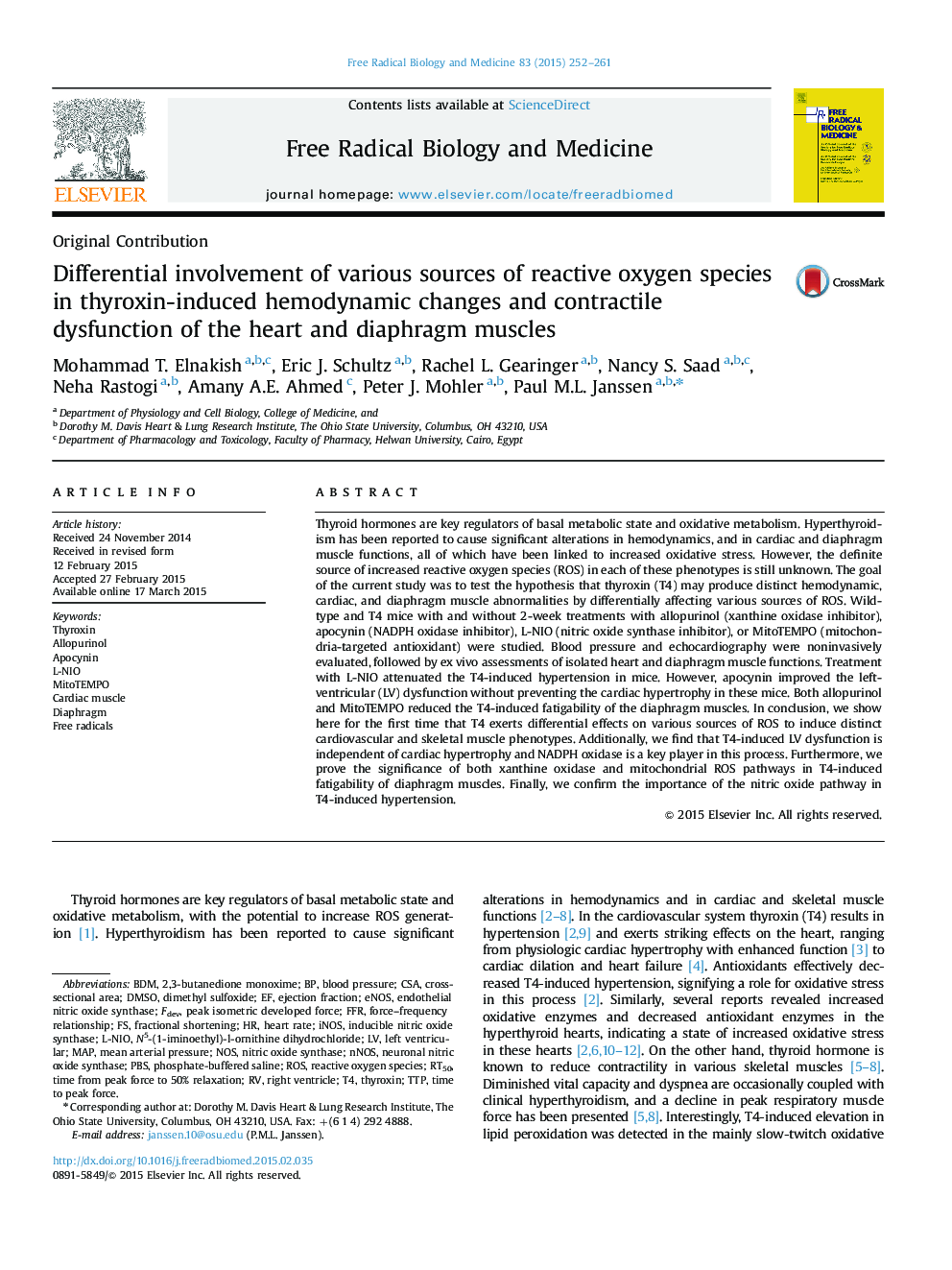| Article ID | Journal | Published Year | Pages | File Type |
|---|---|---|---|---|
| 1907971 | Free Radical Biology and Medicine | 2015 | 10 Pages |
•T4 exerts differential effects on various sources of reactive oxygen species.•The NOS pathway is a major determinant of T4-induced hypertension.•T4-induced LV dysfunction is independent of cardiac hypertrophy.•NADPH oxidase is a key player in T4-induced LV dysfunction.•Xanthine oxidase/mitochondrial ROS are vital in T4-induced diaphragm fatigability.
Thyroid hormones are key regulators of basal metabolic state and oxidative metabolism. Hyperthyroidism has been reported to cause significant alterations in hemodynamics, and in cardiac and diaphragm muscle functions, all of which have been linked to increased oxidative stress. However, the definite source of increased reactive oxygen species (ROS) in each of these phenotypes is still unknown. The goal of the current study was to test the hypothesis that thyroxin (T4) may produce distinct hemodynamic, cardiac, and diaphragm muscle abnormalities by differentially affecting various sources of ROS. Wild-type and T4 mice with and without 2-week treatments with allopurinol (xanthine oxidase inhibitor), apocynin (NADPH oxidase inhibitor), L-NIO (nitric oxide synthase inhibitor), or MitoTEMPO (mitochondria-targeted antioxidant) were studied. Blood pressure and echocardiography were noninvasively evaluated, followed by ex vivo assessments of isolated heart and diaphragm muscle functions. Treatment with L-NIO attenuated the T4-induced hypertension in mice. However, apocynin improved the left-ventricular (LV) dysfunction without preventing the cardiac hypertrophy in these mice. Both allopurinol and MitoTEMPO reduced the T4-induced fatigability of the diaphragm muscles. In conclusion, we show here for the first time that T4 exerts differential effects on various sources of ROS to induce distinct cardiovascular and skeletal muscle phenotypes. Additionally, we find that T4-induced LV dysfunction is independent of cardiac hypertrophy and NADPH oxidase is a key player in this process. Furthermore, we prove the significance of both xanthine oxidase and mitochondrial ROS pathways in T4-induced fatigability of diaphragm muscles. Finally, we confirm the importance of the nitric oxide pathway in T4-induced hypertension.
